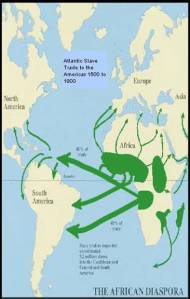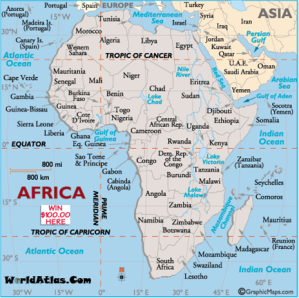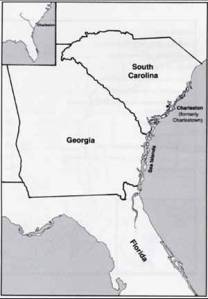I remember all of the schools I attended while living in Teaneck, NJ. There was the Early Learning Center, where I learned to share on the days when I chose to play with friends and how to pursue my own interests when I felt like enjoying my own company. I also met my life long friend there as well. For kindergarten and first grade, I went to Bryant School, which was in walking distance of the house. I used to pretend that I was walking by myself, but my mom was behind me every step of the way. At Bryant, I learned that crawling on the floor under the desks was more fun than the A,B,Cs the teacher was trying to teach yours truly, who already knew how to read. From the second grade until the middle of the fourth grade, I traveled by bus across town to the Hawthorne Elementary School. That’s when I reluctantly settled down to the reading, writing, and ‘rithmetic. On Saturdays throughout most of my early school years though, I went to the African-American Education Center or Afro School for short. There, I learned I was Black. Ok, don’t get me wrong, I already knew I was Black from my parents who overtly instilled self-pride. They bought me the books like, Black is Beautiful and I’m Glad I’m Me. There was also The Star that Could Not Play, illustrated in brilliant Black art by my Uncle Alex, which I referenced in this post. All my dolls were Black, showing me that my skin color was beautiful. And there was that record from the retired Sesame Street muppet, Roosevelt Franklin who was Black and proud and I should be too. Mom and Dad took me to see The Wiz on Broadway. I loved the music so much that I wore out two records. So yeah, I was proud. I saw Blackness at it’s most brilliant. So let me clarify: At Afro School, I learned that I was Black… And that I came from slaves. Period. To make up for our “lost” culture, which they told us often, we learned African style of dress, African dance, food, customs, and words in Swahili. Oh and throw in that Black American custom of Kwanzaa too. So now I have questions. Where in Africa did we come from because you know that Africa is a continent, not a country (Sadly too many people make that mistake, like in the case of my husband’s classmate). What was my culture? What about the language? It was obvious that I had friends and classmates who knew where they came from. They had skin of color like mine, but they were Latino, Jamaican, and Portuguese. My life-long friend and her family had evidence of their native Guyana in decor, food, and customs. When you came to my home, there would be African statues everywhere (I used to play with them like dolls – shh don’t tell Mom). There was the big, black, mask and the African print that hung on the wall. So there was the celebration of African roots at my house. For dinner there would be rice included – lots of rice. On Friday, there was pizza or pastrami (My parents tried Fish on Fridays but after the great “Fish n’ Chips Incident,’ they put an end to that quick, fast, and in a hurry). We spoke English at home for the most part. My dad spent over two years in Peru and speaks fluent Spanish. He tried to teach me, but I think I have a tin ear for the language. Then I tried to learn in school because I really wanted to learn, but my Spanish teach from Venezuela always spoke English, so that plan went out the window. My sister is good at it though. So my family had its own culture. Until it was brought up to me, I didn’t know that my culture was “lost” as the instructors at Afro School kept telling me. After I learned that I came from slaves who lost their culture, I felt strangely ordinary around my friends who celebrated their ethnicity and culture. I just didn’t want to be just told that I was from slaves, big period, and here is a melting pot of African cultures that you can learn to make up for that fact. I’m sure that these earlier experiences contributed to the reason why I developed an interest in the South Carolina Low Country and the Gullah culture. It’s also why it’s an underlying theme in all of my writings. I knew that being slaves wasn’t just the end of the story. I knew there had to be more. The more I learned, the more proud I was of the contributions we made to America and the culture we were able to maintain. I was so proud, that I actually turned it into a lesson in Geography class. You can believe that the lesson was not, “Blacks were slaves and culture was lost. Period”.
First, I let my students know that slaves were taken from certain areas of the continent.

Africans were mostly taken from the Western Coast, but as you can see they were removed from other areas as well.
Next, I let them know that rice was a staple crop, but the American planters had no knowledge of growing. They needed certain slaves that were knowledgeable about growing rice.

Rice growers were specifically taken from the “Winward Coast,” on the west coast, which included the countries in between Senegal and Liberia
The slaves were taken from these areas because, believe it or not, the climate in these countries were similar to that of coastal South Carolina and Georgia.

Rice was grown in these isolated areas, where the climate was similar to the Winward Coast or “Rice Growing” Coast of Africa.
And hey, did you know that Africa is the only continent to lie in all three Tropical Zones?
Because the sea islands were so isolated, the Africans brought there were best able to maintain their culture, a culture called “Gullah”. I see some traces of African similarities on the islands. I had a great-aunt who wove the baskets from the sweet grass. While that tradition is lost to my generation, my mother took a basket weaving class. She is actually pretty good and evidence of her handiwork is in her’s, my sister’s, and my homes. My dad still has the hand-woven casting net made by my grandfather hanging in the garage. I cover my son with the quilt made especially for him by Granny Janie. Ask around: My sisters and cousins have similar quilts for their children.
So, see Afro School? We were not just the descendants of slaves with lost culture, period. With all of the research, technology, and some dedicated scholars, we can find out from where we came and celebrate our own culture. Dad’s side all good. Now, let me find out some stuff about my mother’s side.


Thanks Mrs. DuBose! I enjoyed that history lesson.
LikeLike
You are certainly welcome. I’m glad you enjoyed it. Maybe somebody will let me into their classroom :).
LikeLike
Pingback: The Promise of Palmettos | authorsherysenoelledubose
Pingback: Palmetto Culture – Cotton | sherysenoelledubose